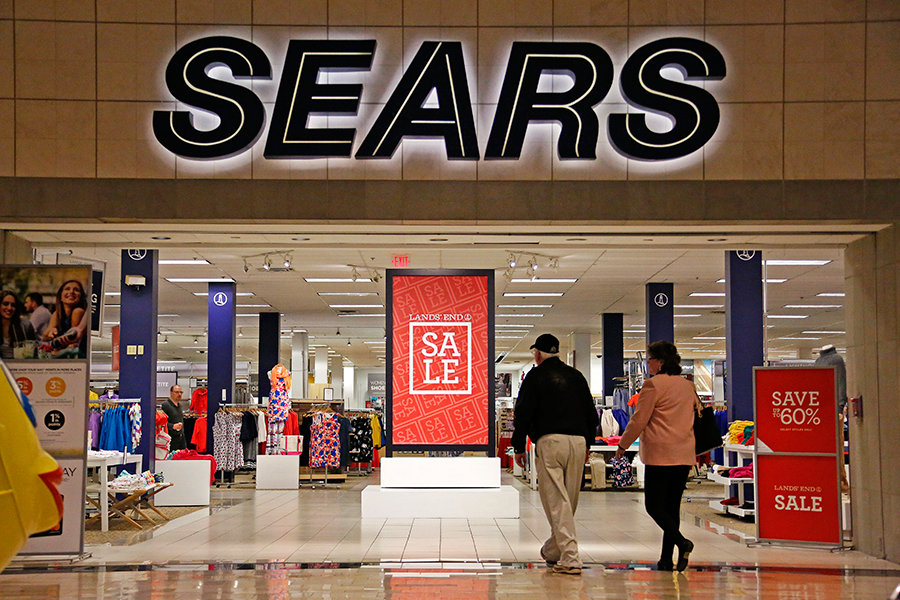Could this be the end of Sears and Kmart? Parent company raises red flag.
Loading...
Sears, once the largest US retailer, indicated on Tuesday that it might be difficult for the chain to keep its doors open after years of declining sales and losses, as the company identifies various risks and uncertainties in its annual report for the fiscal year ended on Jan. 28.
Sears Holdings Corp., the parent of Kmart and Sears, said an inability to generate more liquidity – because of its accumulated losses and the restrictions from a domestic pensions plan – will limit its access to new merchandise and new funds and restrain its ability to offer services needed, the company said.
"Our historical operating results indicate substantial doubt exists related to the company's ability to continue as a going concern," Sears said in the regulatory filing to the Securities and Exchange Commission on Tuesday.
The 131-year-old department store chain has not reported a profit since 2011 and has accumulated $7.4 billion in losses since 2013, as its revenue dropped 44 percent to $22.1 billion. It lost $2.22 billion in the past fiscal year and now has total liabilities of $13.19 billion.
The company in February outlined its “next phase of strategic transformation,” hoping to reduce costs by $1 billion and cut its debt and pension obligations by at least $1.5 billion.
In its heyday, Sears, which started as a mail-order company, was once emblematic of the post-World War II consumer boom in the Untied States. Facing headwinds churned up by a changing retail landscape and increasing competition from the likes of Wal-Mart and Target, the store merged with Kmart in 2004 to become Sears Holdings Corp.
Shortly after the acquisition, its chief executive officer Edward Lampert said only by closing struggling stores and focusing on profitable sales, instead of seeking conventional measures of retail success, could Sears regain its health. The chain has cut its retail stores in the United States by nearly a third since 2013 to 670 and has placed some of its stores in a real estate investment trust.
It has also been taking significant steps to reduce costs and liabilities by selling some of its businesses. The company reached a deal on Jan. 5 to sell its Craftsman brand to Stanley Black & Decker for an upfront price of $900 million. Sears received $525 million upon closing the deal, and is scheduled to receive a further $250 million in cash in the next three years, as well as payments on future sales of the Craftsman products in the next 15 years. The earnings from the deal, Sears said, could meet its capital needs for the current fiscal year.
In 2014, Sears also spun off its Lands’ End clothing chain and reduced its holdings of Sears Canada by up to 40 million shares to consolidate its operation. According to Reuters, the company is also considering selling some other businesses, including the Kenmore appliance and DieHard car battery brands.
Yet, any additional asset sales might be difficult for the company. Sears, which employs 140,000 people, in March entered into a five-year pension plan protection and forbearance agreement with the Pension Benefit Guaranty Corporation. The agreement requires Sears to turn over $250 million garnered from Stanley to its pension plan by March 2020 while granting the pension board a 15-year lien on additional revenue owed to Sears.
Sears is not the only box store to struggle with its sales. After years of losses, J.C. Penney in February said it delivered its first net profit since 2010 of $1 million. While the chain plans to shutter up to 140 stores, it remains hopeful it will be able to turn around its brick-and-mortar business. Part of the company’s revamp plan includes offering in-store boutiques, such as Sephora cosmetics and salon services.
This report includes material from the Associated Press and Reuters.








